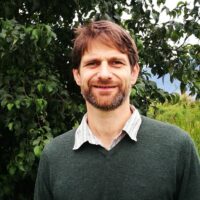WGV at White Gum Valley can become a global beacon of sustainability
WGV at White Gum Valley led by LandCorp is a diverse, mixed-use development of more than 80 homes in the City of Fremantle, 20km from Perth, Western Australia. Previously home to a former school, WGV provided single lots for self-build detached dwellings, maisonettes and apartment buildings.
It’s used One Planet Living since 2015 to create a highly sustainable, people-friendly community with plenty of green space and has been recognised by Bioregional as a Global Leader in One Planet Living.
From zero carbon energy to engaging its residents with sustainability, WGV is demonstrating that we truly can create communities that are great places to live within the limits of our one planet.
Now residents are moving in, its One Planet Annual Review 2018 is showing that WGV proving to be one of those rare projects that sets itself highly ambitious targets and manages to exceed them!
From zero carbon energy to engaging its residents with sustainability, WGV is demonstrating that we truly can create communities that are great places to live within the limits of our one planet.
Zero carbon from day one
WGV has a highly ambitious target of achieving 100% of its energy from renewables from the first day residents move in. While real-life data isn’t available yet, accurate modelling based on the installed solar PV panels capacity, battery storage and expected energy use show that this is likely to be achieved.
While this is in itself good news, the achievement is even more impressive because it’s been achieved on a project with such a large diversity of housing including single self-build lots, apartments and cooperative living.
Not to mention the fact that, as self-build, LandCorp had to pass these requirements onto secondary developers and private individuals. It actively supported them to do this by offering a ‘sustainability upgrade’ package with subsidised solar panels, as well as securing funding for an innovative electricity storage and trading system.
Creating a culture of sustainability
WGV is also set to become a community with a strong culture of sustainability among its residents. All of them have learnt about sustainability before moving in, through meetings workshops and the Residents‘ Manual and the site has many features to support sustainable and community-focused living easier, including:
- a low car parking ratio, with on average about 1.2 car spaces per house which is very low for Perth, and electric car club
- green waste and composting facilities onsite for all residents
- green space throughout the site where children can play and adults can relax
- regular events organised by the artists’ cooperative.
On top of this, there are several housing types that are providing affordable homes for local people including younger generations and artists. Sophie Maubon, a Project Architect at London-based Waugh Thistleton Architects thinks that its sustainable choices ‘deliver a real quality of place.’
Spreading wider change
For such a relatively small development WGV is having a significant impact. The multi-unit Gen Y house, designed to help younger generations get on the property ladder, has inspired at least three other lots being developed as multi-units, with associated efficient use of materials and reduced parking.
One of these, the Evermore WGV apartment block led by Yolk Property Group, has also embraced One Planet Living wholeheartedly and has also just been recognised by Bioregional as a Global Leader in One Planet Living. Tao Bourton, Director of Yolk, says: “What we’ve learnt at Evermore has helped put us at the forefront of sustainability and we’ve started to have requests from other developers wanting to visit our sites and learn from them.”
LandCorp and its partners have also been excellent at actively spreading the message of sustainable development in the local area by
- examining WGV’s progress in-depth through several research projects with local universities and organisations
- winning a number of awards, including two at the 2017 Urban Development Institute of Australia (UDIA) Awards for Excellence.
- inspiring further use of One Planet Living - with both LandCorp and Fremantle (a One Planet City itself) promoting the framework, a second development in Fremantle is using the framework and another of LandCorp’s developments also aims to be a One Planet Community.
The result of this innovation and hard work is that all ten One Planet Living principles are on track to meet the targets initially set and some are almost complete already.
As the project nears the end of design and construction, it is crucial that the two remaining major projects - the townhouse site and the Baugruppen project[1] - also meet these targets.
Based on the experience to date we can be quietly confident that they will find a way to meet the energy and water targets. What will require additional focus is ensuring that these projects minimise car parking and embrace strategies to minimise the embodied carbon of their construction.
If those projects can meet the standards set across WGV so far, then this project really will be a global beacon of sustainability.
[1] This is a successful European model of housing where people come together to be the developer of their own higher density homes.








